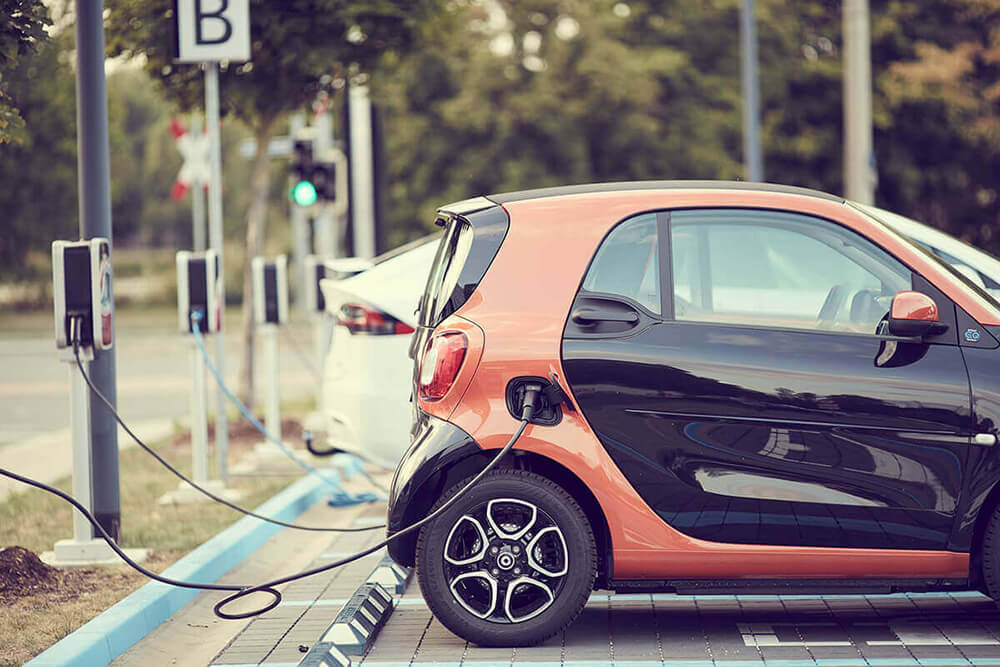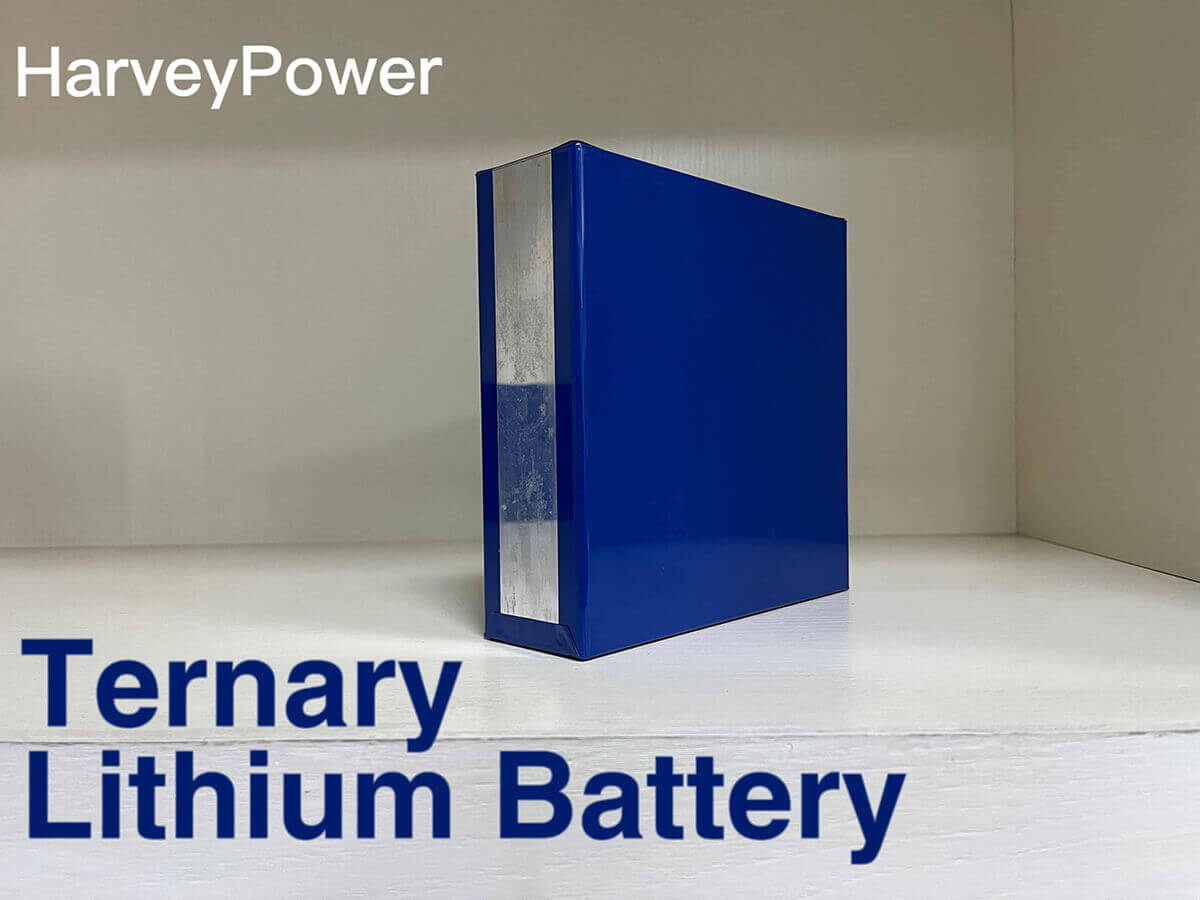Ternary Lithium Battery VS Lifepo4 Battery - Ultimate Battle

As the power source of electric vehicles, batteries are naturally one of the most important components. The battery life, charging and discharging of electric vehicles are also inseparable from the performance of the battery. At present, domestic power batteries are mainly divided into two schools, which are divided into lithium iron phosphate batteries and ternary lithium batteries according to the difference in cathode materials.
Although they are all rechargeable batteries, they can be charged and discharged repeatedly, but due to the different materials, the performance reflected in the level of use is still very different. So what are the advantages of ternary lithium batteries?
In this blog, we will introduce you what is a ternary lithium battery, and compare its advantages and disadvantages with lithium iron phosphate batteries.
After reading this article, you must have a comprehensive understanding of the understanding and use of ternary lithium batteries, and choose the lithium battery that is most suitable for your application.

What is the Ternary Lithium Battery?
Ternary polymer lithium battery refers to a lithium battery in which the positive electrode material uses nickel-cobalt lithium manganese oxide (Li(NiCoMn)O2) or nickel-cobalt lithium aluminate ternary positive electrode material.
The ternary composite cathode material is made of nickel salt, cobalt salt, and manganese salt, and the ratio of nickel, cobalt, and manganese can be adjusted according to actual needs.
The ternary lithium-ion battery has high energy density and better cycle performance than normal lithium cobalt oxide. At present, with the continuous improvement of the formula and the improvement of the structure, the nominal voltage of the battery has reached 3.7V, and the capacity has reached or exceeded the level of the lithium cobalt oxide battery.
It is worth mentioning that in the actual research and development application, there is another kind of positive electrode is ternary, the negative electrode is lithium titanate, usually called "lithium titanate", its performance is relatively safe, and its life is relatively long, but it does not belong to the type of ternary lithium battery.
Technical Parameters
| Indicators | Parameter |
| Nominal voltages | 3.7V |
| Working voltage | 3.6-4.3V |
| Energy density | 170-200Wh/kg |
| Standard discharge continuous current | 0.2c |
| Maximum discharge continuous current | 1C |
| Overcharge protection voltage | 4.325±0.025V |
| Over-discharge protection voltage | 2.5±0.05V |
| Working temperature range | –20℃ ~ 60 ℃ |
| Cycle Life | 800 |
Advantages
- The battery voltage is as high as 3.7v, which can provide more sufficient power support for the vehicle. The charging speed is also faster.
- Low-temperature resistance, even in the face of a low temperature of minus 20 degrees, it also can guarantee the good working performance of the battery.
- The energy density of the battery is high, the overall volume and weight are small, but the performance is still very good, and the output power is higher.
Disadvantages
- The cycle life of the battery is relatively low, maybe less than 2000 times.
- The heat resistance is poor, the battery spontaneous combustion is high, and the safety cannot be greatly guaranteed.
- The cost of battery raw materials is high, and the production threshold is high.
What is the Lithium iron Phosphate Battery?
Lithium iron phosphate battery (LiFePo4) refers to a lithium-ion battery that uses lithium iron phosphate as the positive electrode material.
Its characteristic is that it does not contain precious elements such as cobalt, the price of raw materials is low, and the resources of phosphorus and iron in the earth are abundant, so there will be no problem of supplying materials.
It has a moderate working voltage (3.2V), large capacitance per unit weight (170mAh/g), high discharge power, fast charging and long cycle life, and high stability in high temperature and high heat environments.
Technical Parameters
| Indicators | Parameter |
| Nominal voltages | 3.2V |
| Working voltage | 3.0~3.3V |
| Energy density | 160-180Wh/kg |
| Standard discharge continuous current | 0.2c |
| Maximum discharge continuous current | 1C |
| Overcharge protection voltage | 3.7±0.025V |
| Over-discharge protection voltage | 2.5±0.05V |
| Working temperature range | –20℃~ 60 ℃ |
| Cycle Life | 2000~10000 |
Advantages
- The raw materials are simple and safe, do not contain heavy metal elements such as cobalt, and have high recycling value.
- Good heat resistance. Basically, spontaneous combustion may occur only when the battery temperature reaches above 800 degrees, and the safety is relatively good.
- The cycle life of the battery is as high as 2000~10000 times, and the working voltage is 3.2-3.4v, which is enough for the car owner to use as a power battery.
Disadvantages
- When facing the low temperature of minus 20 degrees, the performance of the battery will be affected and the performance will not be stable.
- The tap density and compaction density are very low, resulting in low energy density of lithium-ion batteries.
- The preparation cost of the material and the manufacturing cost of the battery are high, the battery yield is low, and the consistency is poor.
Ternary Lithium Battery VS Lifepo4 Battery
In summary, we can see that ternary lithium batteries and lifepo4 batteries have their own characteristics, but how should we choose? We can compare from the following 6 aspects.
(1) Energy Density Comparison
Due to the use of more active metal elements, the ternary lithium battery usually has an energy density (140wh/kg-160 wh/kg), which is slightly lower than that of a high-nickel ratio ternary battery (160 wh/kg-180 wh/kg). , part of the weight energy density can reach 180Wh-240Wh/kg.
The energy density of lithium iron phosphate batteries is generally 110-140 W/kg, such as blade batteries, the energy density can reach 120W/kg-140W/kg.
Conclusion: Ternary lithium battery > Lifepo4 battery
(2) Safety
The liquid electrolyte in ternary lithium batteries is flammable and explosive. It is easy to trigger thermal runaway during long-term use, and the growth of lithium dendrites during charging and discharging is easy to pierce the separator, causing short circuit of the battery and causing safety hazards.
Lithium iron phosphate batteries have the advantages of high temperature resistance, strong safety and stability, and better cycle performance in actual use.
Conclusion: Ternary lithium battery < Lifepo4 battery
(3) Low-temperature resistance
Ternary lithium battery: The low-temperature performance of the ternary lithium battery is excellent, and it can still maintain about 90% of the performance in summer at 0-5°C in winter.
Even at -20°C, ternary lithium battery also can maintain about 70%~80% of the normal battery capacity.
Lithium iron phosphate is not resistant to low temperature, and the temperature is lower than -10°C. Lithium iron phosphate battery decays very quickly, and can only maintain about 50%~60% of the normal battery capacity at -20°C.
Conclusion: Ternary lithium battery > Lifepo4 battery
(4) Life
If the remaining capacity/initial capacity=80% is used as the end point of the test, to test:
Lithium iron phosphate battery packs have a longer cycle life than lead-acid batteries and ternary lithium batteries.
The "long life" of our car lead-acid batteries is only about 300 times.
Theoretically, the ternary lithium battery can reach 2000 times, and the actual application will reduce the capacity to 60% after about 1000 times.
The real life of the lithium iron phosphate battery reaches 3,000 times, and there is still 95% of the capacity at this time, and its conceptual cycle life reaches more than 5,000 times.
Conclusion: Ternary lithium battery < Lifepo4 battery
(5) Price
The ternary lithium battery mainly uses the ternary positive electrode material of "nickel cobalt lithium manganese oxide" or "nickel cobalt lithium aluminate" as the positive electrode, mainly using nickel salt, cobalt salt, and manganese salt as raw materials.
Among them, the "cobalt element" in these two cathode materials is a noble metal. The cost is high, and with the reduction of materials, the price continues to rise.
And because the safety of the battery is poor and it is not resistant to high temperature, it must be combined with a set of complex battery protection equipment, which further increases the cost of the ternary lithium battery product.
Since lithium iron phosphate batteries do not contain precious metal materials, the cost of raw materials can be compressed very low.
And the battery pack is composed of lithium iron phosphate as the battery cell is relatively simple, and there is no need to protect the auxiliary equipment too much.
Conclusion: Ternary lithium battery < Lifepo4 battery
(6) Charging efficiency
Ternary lithium batteries have a great advantage over lithium iron phosphate batteries in terms of charging efficiency.
At present, the more common charging method on the market is constant current and constant voltage charging.
In this process, the ratio of the constant current charging capacity to the total battery capacity is called the constant current ratio. It is a key value to measure the charging efficiency of a group of batteries during the charging process.
Generally, the larger the percentage, the higher the charge in the constant current stage, which proves that the charging efficiency of the battery is higher.
Experiments have proved that there is little difference between the two when charging below 10°C, but the distance will be opened above 10°C.
When charging at 20°C, the constant current ratio of the ternary lithium battery is 52.75%, the constant current ratio of the lithium iron phosphate battery is 10.08%, and the ternary lithium battery is 5 times that of the lithium iron phosphate battery.
Conclusion: Ternary lithium battery > Lifepo4 battery
Summarize
Combining various factors, we can conclude that the use characteristics of ternary lithium batteries and lithium iron phosphate are as follows.
Ternary lithium battery:>
- Slightly less secure.
- The charging rate is better.
- There is not much performance drop in winter, and the high temperature performance is poor.
- High energy density, small size, can hold larger capacity.
- The initial capacity is large, but there will be a significant decline in the later period of life, and the general life span is about 3 years.
Lithium iron phosphate battery:
- High security.
- The cost is relatively low.
- The energy density is slightly lower and the size is relatively large.
- Good performance at high temperature, poor performance at low temperature.
- It can maintain a relatively gentle decay rate during the service life, and it is generally possible to use it for more than 10 years.
In general, as the main force of power lithium batteries and energy storage batteries, the energy density of lithium iron phosphate batteries has basically reached the theoretical extreme, but due to the advantages of cost and safety, it is more acceptable in industrial production, so there has a lot of demand.
Choose the Best Battery for your Solar System
Harveypower lifepo4 battery manufacturer is committed to creating the best solar battery, fully promoting the global green environmental protection and energy development.
All energy storage systems are assembled with CATL cells, with a cycle rate of more than 6,000 times, 90% DOD, and compatibility with 20+ mainstream inverter brands on the market.
The intelligent BMS system is matched with LED display and Bluetooth function, bringing multiple security guarantees to your daily use.
At the same time, our 68 core technical teams can also customize unique solar energy storage systems for you, and provide OEM and ODM services.
Our popular products:
Lifepo4 server rack batteries and stacked batteries, which can be used for household/industrial and commercial use, 1-30kWh free expansion.
The king of home space saving - Wall mount batteries.
